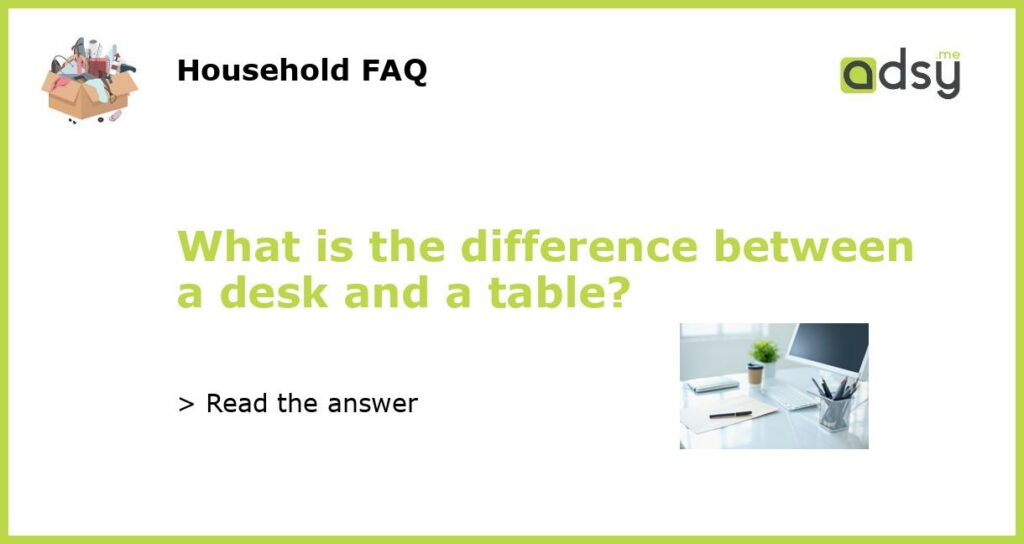Desk vs. Table: Understanding the Core Differences
When it comes to choosing furniture for your home or office, one of the most common dilemmas is understanding the difference between a desk and a table. Although the terms “desk” and “table” may be used interchangeably at times, there are distinct characteristics that set them apart. To make an informed decision, it is essential to understand the core differences between a desk and a table.
Purpose and Functionality
The primary difference between a desk and a table lies in their purpose and functionality. A desk is designed specifically for work, study, or administrative tasks. It often features additional features such as drawers, shelves, and built-in compartments to provide storage options for books, documents, and stationery. On the other hand, a table is a more general-purpose piece of furniture that can be used for dining, gatherings, or displaying decorative items. While some tables may have additional features like extensions or adjustable heights, they do not typically come with built-in storage options.
Design and Structure
The design and structure of a desk and a table also differ significantly. Desks are usually designed with ergonomics in mind, focusing on providing a comfortable and efficient workspace. They often have features like adjustable heights, keyboard trays, and cable management systems to enhance productivity and maintain a clutter-free workspace. Tables, on the other hand, are more versatile in terms of design and structure, ranging from rectangular or round shapes to various materials and styles. Their main purpose is to provide a flat, stable surface for different activities.
Size and Dimensions
Size and dimensions are important considerations when differentiating between a desk and a table. Desks are generally smaller in size to cater to individual work requirements. They are designed to fit a chair and offer ample space for a computer or laptop, writing materials, and other work essentials. Tables, on the other hand, can vary significantly in size depending on their intended use. Dining tables, for example, are typically larger to accommodate several people, while coffee tables are smaller and often placed in living rooms or seating areas.
Location and Placement
The location and placement of a desk or a table can help distinguish between the two. Desks are commonly found in workspaces such as offices, study rooms, or home offices. They are positioned against walls or placed in dedicated work areas to provide a focused environment for tasks. Tables, on the other hand, can be found in various rooms of a house or in communal spaces like restaurants or cafeterias. They are often placed in the center of a room or near seating areas for easy access and convenience.
Pricing and Availability
Lastly, the pricing and availability of desks and tables can also differ. Due to their specialized design and additional features, desks are often priced higher than tables. They are specifically manufactured for work purposes, which means they are equipped with ergonomic features and storage solutions that contribute to their higher price point. On the other hand, tables are more widely available and come in a variety of price ranges depending on their design, material, and size.
In conclusion, while desks and tables share some similarities, they have distinct differences in terms of purpose, design, size, location, and pricing. Understanding these differences allows individuals to make a more informed decision when selecting furniture for their homes or offices.






